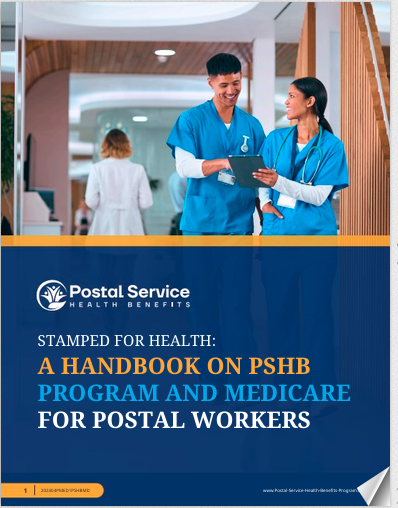Key Takeaways
-
Even with strong coverage, PSHB deductibles can be higher than expected if you’re not paying close attention to the fine print.
-
The timing of services and how you coordinate with Medicare can significantly affect how much you end up paying out-of-pocket.
What Deductibles Really Mean in Your PSHB Plan
When you enrolled in your Postal Service Health Benefits (PSHB) plan, you probably focused on monthly premiums, copayments, and coinsurance. But there’s another layer to your total out-of-pocket costs—your deductible. This is the amount you must pay before your health plan starts covering certain services, and it can sneak up on you if you’re not prepared.
Deductibles under PSHB vary widely depending on your chosen plan and whether you receive care in-network or out-of-network. In 2025, these costs typically range from $350 to $2,000 for in-network care, with even higher thresholds for out-of-network services. And unlike premiums, deductibles reset every calendar year.
Why You Might Overlook the Deductible Amount
The deductible amount might not catch your attention at first. Many postal retirees and workers prioritize monthly premiums or look at copays for office visits. But here’s why the deductible matters more than you might think:
-
It comes before coinsurance kicks in: Until you meet your deductible, you might be paying the full cost of certain services out-of-pocket.
-
It applies to a wide range of care: Lab work, imaging, hospital stays, outpatient surgery—these are just a few examples of services that often fall under the deductible requirement.
-
It can restart unexpectedly: For those who enroll mid-year or switch plans during Open Season, deductibles reset and don’t carry over between plans or years.
How Deductibles Interact With Medicare
If you’re a Medicare-eligible postal retiree, your deductible burden might change depending on your coordination between PSHB and Medicare Part B. Here’s how it works in 2025:
-
If you enroll in Medicare Part B, many PSHB plans reduce or waive deductibles altogether.
-
If you opt out of Medicare Part B, you remain fully responsible for your PSHB plan’s deductible.
This interaction makes it especially important to evaluate whether enrolling in Medicare Part B offers better value—something many overlook until faced with a high bill.
High-Deductible Plans: A Double-Edged Sword
Some PSHB enrollees are attracted to high-deductible plans because they offer lower premiums. But in exchange, you’re assuming more upfront cost when you seek care. For example:
-
A high-deductible plan may not provide coverage until you’ve spent $1,500 or more on covered services.
-
If you’re relatively healthy and rarely use your plan, you might come out ahead.
-
But if you suddenly need an MRI, outpatient surgery, or urgent care multiple times in a year, you could quickly hit that deductible—and your savings vanish.
Always weigh your potential medical needs against your risk tolerance and budget before choosing a high-deductible PSHB plan.
What Happens When You See Out-of-Network Providers
Out-of-network deductibles under PSHB can be significantly higher—often two to three times more than in-network thresholds. Let’s break it down:
-
In-network deductible (2025 average): $350 to $2,000
-
Out-of-network deductible (2025 average): $1,000 to $3,000 or more
This disparity underscores the importance of staying within your PSHB plan’s network whenever possible. Out-of-network charges may not just be higher—they might not count toward your deductible at all in some plans.
Hidden Deductibles: Pharmacy and Specialty Care
Even if you’re familiar with your medical deductible, there could be additional ones hiding in your plan documents:
-
Pharmacy Deductibles: Some PSHB plans in 2025 include a separate deductible just for prescription drugs, especially for higher-tier medications.
-
Specialty Services: Some types of outpatient therapy, durable medical equipment (DME), or skilled nursing facility care might require a separate deductible or have their own caps.
Make sure to review your plan’s summary of benefits so you’re not surprised by separate deductible categories.
Timing Matters: When and How You Use Care
The deductible resets every January, which makes timing especially important. Consider the following:
-
If you’re planning an elective procedure (like cataract surgery or joint replacement), doing it in the same calendar year as other major care can help you meet your deductible faster.
-
If you split your care between December and January, you may have to pay two separate deductibles.
A little planning goes a long way. If you know you’ll need surgery, scans, or a specialist visit, bundling them into the same calendar year could save you hundreds—or even thousands—of dollars.
Family Deductibles: The Group Effect
If you’re enrolled in a Self Plus One or Self and Family plan, your plan likely has both individual and family deductibles. Here’s what that means:
-
Individual deductible: This is the amount each covered person must meet before benefits apply to them.
-
Family deductible: This is a combined amount that, once met by any combination of family members, activates full coverage for everyone.
Some PSHB plans only require the family deductible to be met by two members, while others spread the cost more evenly. Either way, it’s important to understand how this structure could impact your household budget if more than one person needs care in the same year.
FEHB vs. PSHB Deductibles: What Changed in 2025?
Before the transition to PSHB, postal retirees and employees were part of the Federal Employees Health Benefits (FEHB) Program. While many plans carried over under PSHB, 2025 brought some key changes:
-
New plan options under PSHB may have different deductible thresholds even if they appear similar to past FEHB plans.
-
Medicare integration rules have tightened, making deductible coordination more significant than before.
-
Higher premiums in 2025 don’t always mean lower deductibles—some plans raised both.
If you’re holding on to assumptions based on your old FEHB coverage, it’s time to re-read your 2025 PSHB plan brochure. Deductible structures might look similar on paper but act very differently in practice.
Don’t Confuse Deductibles With Other Costs
It’s easy to confuse deductibles with other common cost-sharing terms. Here’s a quick refresher:
-
Deductible: The amount you pay before the plan starts covering certain services.
-
Copayment: A fixed amount you pay for a service, usually not affected by the deductible.
-
Coinsurance: A percentage of the cost you pay after meeting your deductible.
Understanding these distinctions will help you avoid unpleasant surprises at the pharmacy, hospital, or imaging center.
Reviewing Your Plan Each Year Is Non-Negotiable
Every year from November to December, you have a chance to change your PSHB plan during Open Season. That’s your window to:
-
Evaluate new plans and compare deductibles
-
Consider your health needs for the coming year
-
Adjust your Medicare Part B enrollment if needed
-
Get help from a licensed insurance agent listed on the website
Skipping this annual review means you might miss out on lower deductible options or changes that could save you money.
Stay Ahead of Deductible Surprises in 2025
Deductibles may not dominate headlines the way premiums do, but they’re one of the most important numbers in your PSHB coverage. A single overlooked deductible can mean hundreds of dollars in unexpected bills, especially if you’re managing multiple health issues or covering family members.
Use your plan’s summary of benefits, understand your in-network vs. out-of-network rules, and take full advantage of Medicare Part B if eligible. If anything is unclear, reach out to a licensed insurance agent listed on the website. They can walk you through the plan details that brochures often gloss over.





